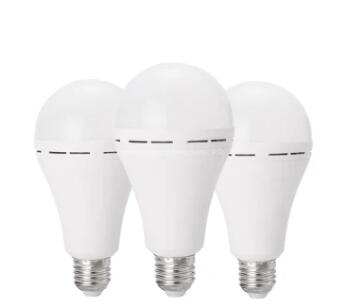How do LED bulb lights contribute to energy savings and environmental sustainability
2023-10-25
LED (Light Emitting Diode) bulb lights contribute to energy savings and environmental sustainability in several ways:
1. Energy Efficiency: LEDs are highly energy-efficient, converting a large portion of electrical energy into visible light rather than heat. They use significantly less electricity than traditional incandescent bulbs, which waste a considerable amount of energy as heat. This energy efficiency translates to direct energy savings for consumers.
2. Longevity: LED bulbs have a much longer lifespan than incandescent bulbs, typically lasting tens of thousands of hours. This reduces the need for frequent replacements, saving resources and reducing the environmental impact associated with manufacturing, packaging, and disposal of bulbs.
3. Lower Carbon Emissions: LED bulbs' energy efficiency results in lower greenhouse gas emissions. Reduced electricity consumption leads to a decrease in carbon dioxide emissions from power plants, helping to combat climate change.
4. Reduced Toxic Materials: Unlike fluorescent lights, which contain hazardous materials like mercury, LED bulbs are mercury-free. This makes LED lighting environmentally safer and reduces the risk of mercury contamination when disposing of old bulbs.
5. Lower Heat Emission: LED bulbs emit very little heat compared to incandescent bulbs. This can lead to reduced cooling costs in indoor spaces, further contributing to energy savings.
6. Instant Light: LEDs provide instant full brightness without a warm-up period. This can lead to energy savings in applications where lights are frequently turned on and off.
7. Smart Lighting Control: LED bulbs can be integrated into smart lighting systems, allowing users to control and automate their lighting to optimize energy usage. Features like dimming and scheduling can further enhance energy efficiency.
8. Adaptive Lighting: LEDs can be used with sensors to provide adaptive lighting. For example, motion sensors can turn off lights in unoccupied rooms, and daylight sensors can adjust lighting levels based on natural light, reducing unnecessary energy consumption.
9. Reduced Light Pollution: LEDs can be designed to direct light where it's needed, minimizing light pollution. This helps protect the environment and preserves natural habitats.
10. Recyclability: LED bulbs are generally recyclable, and their components can be separated and reused. Some manufacturers offer recycling programs to responsibly dispose of old LED bulbs.
11. Energy Savings in Public Spaces: Governments and municipalities are increasingly switching to LED street lighting, resulting in substantial energy and cost savings for cities while reducing light pollution.
Overall, LED bulb lights offer a combination of energy efficiency, longevity, and reduced environmental impact, making them a sustainable and responsible choice for lighting applications. Their contributions to energy savings and environmental sustainability align with efforts to reduce energy consumption, lower carbon emissions, and conserve resources.



